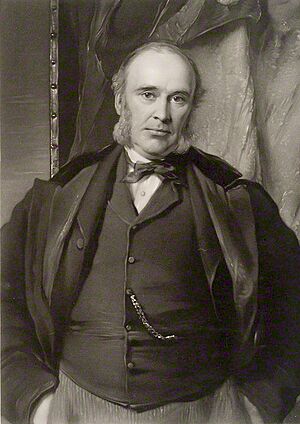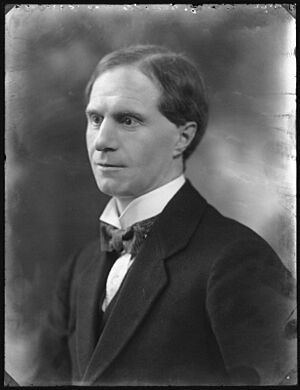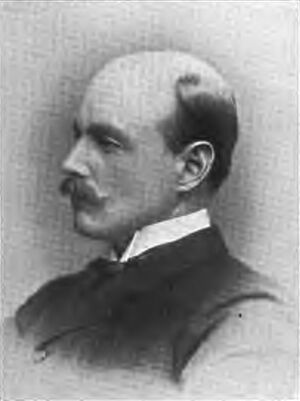Strand (UK Parliament constituency) facts for kids
Quick facts for kids {{{Name}}}[[{{{Type}}} constituency]] |
|
|---|---|
| [[Image:{{{Map1}}}Constituency.svg|120px|]] [[Image:England{{{Map2}}}.svg|120px|]] |
|
| {{{Name}}} shown within [[{{{Entity}}}]], and {{{Entity}}} shown within England | |
| Created: | {{{Year}}} |
| MP: | {{{MP}}} |
| Party: | {{{Party}}} |
| Type: | House of Commons |
| County: | [[{{{County}}}]] |
| EP constituency: | [[{{{EP}}} (European Parliament constituency)|{{{EP}}}]] |
Strand was a special area in London that had its own representative in the House of Commons. This representative is called a Member of Parliament (MP). The Strand area is located in the Strand district of the City of Westminster.
Contents
What Was the Strand Constituency?
A parliamentary constituency is like a voting district. People living in that district vote for one person to represent them in the country's parliament. The Strand constituency was created so that people in that part of London could have their own voice in the UK Parliament.
How It Started and Ended
The Strand constituency was created in 1885. This happened because of a law called the Redistribution of Seats Act 1885. It was first used for the general election that year. The constituency existed for about 33 years. It was then removed in 1918, just before another general election.
Where Was Strand? (Its Boundaries)
The "boundaries" of a constituency are like its borders. They show exactly which areas are included. From 1885 to 1918, the Strand constituency covered several parts of London. These included the Strand District itself, which had smaller areas like the Liberty of the Rolls and the Precinct of the Savoy. It also included the parishes of St Anne, Soho; St Clement Danes; St Mary le Strand; and St Paul Covent Garden. The parishes of St James, Westminster, and St Martin in the Fields were also part of it.
Who Represented Strand? (Members of Parliament)
The Strand constituency always elected one Member of Parliament (MP). These MPs were usually from the Conservative Party. Here are the people who represented Strand:
| Election | Member | Party | |
|---|---|---|---|
| 1885 | William Henry Smith | Conservative | |
| 1891 | Frederick Smith | Conservative | |
| 1910 | Walter Long | Conservative | |
| 1918 | constituency abolished | ||
How Elections Worked in Strand
Elections are how people choose their representatives. In the Strand constituency, voters would choose between different candidates. The candidate with the most votes would become the MP.
What Do Election Numbers Mean?
When you see election results, there are a few important numbers:
- Votes: This is the total number of people who voted for a candidate.
- Percentage: This shows what share of the total votes a candidate received.
- Majority: This is the difference in votes between the winning candidate and the candidate who came in second. A bigger majority means the winner had a much stronger lead.
- Turnout: This is the percentage of people who were allowed to vote (registered electors) who actually voted. A higher turnout means more people participated.
- Registered Electors: This is the total number of people in the area who were eligible to vote.
A Look at Some Election Results
The Strand constituency was often won by the Conservative Party. Sometimes, a by-election would happen if an MP left their job or passed away. This meant a new election was held just for that one seat.
In the 1885 general election, William Henry Smith won for the Conservatives. He received 5,645 votes, which was 69.4% of all votes. The Liberal candidate got 2,486 votes (30.6%). Smith had a majority of 3,159 votes. About 72.2% of registered voters participated.
William Henry Smith was a very important person. He became the Secretary of State for War. Because of this new job, a by-election was held in 1886. Smith was the only candidate, so he won without anyone else running against him.
Later, in October 1891, after William Henry Smith passed away, another by-election was held. Frederick Smith, also a Conservative, won this election. He got 4,952 votes (71.8%).
In the January 1910 general election, Walter Long became the MP for Strand. He was also a Conservative. He won with 4,840 votes (74.8%). The Liberal candidate, Leonard Costello, received 1,627 votes (25.2%). The turnout for this election was 80.6%.
The last general election for Strand was in December 1910. Walter Long won again for the Conservatives. He received 4,143 votes (78.5%). The Liberal candidate, Samuel Robert Earle, got 1,138 votes (21.5%).
The constituency was planned to have another election around 1914-1915, but it was abolished before that happened.
Images for kids





